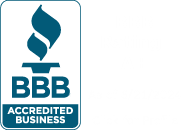Last updated on: May 20, 2025
One misconception many tax-exempt nonprofit organizations have is that they are exempt from all taxes. While nonprofits with 501(c)(3) determination are exempt from federal income taxes and many states’ taxes, the organization is still responsible for local service taxes and state and federal payroll taxes. Don’t let your nonprofit organization get caught with an unexpected tax bill by being prepared. Be sure to read all of the contractor and payroll tax filing requirements for nonprofit organizations below!
What follows is general information about contractor and employee tax filing requirements and is not legal or tax advice. Consult tax professionals with any questions to ensure compliance with frequently changing tax laws. Contact the nonprofit professionals at BryteBridge for more information about your specific tax situation.
Contractors vs. Employees
 There are two classifications for people and businesses providing services to your nonprofit organization: contractors and employees. Misclassifying the service provider can cause significant fees and potential tax implications for your nonprofit. Let’s look at a few of the differences between contractors and employees.
There are two classifications for people and businesses providing services to your nonprofit organization: contractors and employees. Misclassifying the service provider can cause significant fees and potential tax implications for your nonprofit. Let’s look at a few of the differences between contractors and employees.
Contractors are hired to perform a specific function for a designated period. The client cannot tell the contractor what tools to use, how to do the work, or even under what hourly schedule they work.
Your organization may contract with a graphic designer to create a logo or a website for the nonprofit. You may also contract with a grant manager to research and apply for foundation grants. In both situations, you may provide desired deliverables and outcomes, but it’s up to the contractor to complete the task on their terms.
Contractors may be individuals or businesses. The graphic designer, for example, might be an LLC or S-Corp. While you’re contracting with an individual, technically, you’re contracting with their business.
Your nonprofit organization is not responsible for payroll taxes for contractors, but there are annual reporting requirements.
Employees, on the other hand, are hired by the organization and work under the conditions, expectations, and schedules set by the nonprofit. You, as the employer, can tell the employee what tools to use, how to do the work, and what schedule they will work.
Using the same examples as before, your nonprofit may hire a part- or full-time graphic designer to create logos and other work for the organization. Under an employee/employer relationship, they not only meet deadlines but follow all expectations and schedules set by the employer.
Unlike contractors, employees are always individuals and not other businesses.
Your nonprofit is responsible for payroll taxes in addition to annual reporting requirements.
Collect Information
When entering into a business relationship, whether with a contractor or employee, your nonprofit organization must collect information required for reporting and accounting. It’s essential to collect all information before any work begins or payments are made. Let’s explore some of the information you should always collect.
As a bare minimum, contractors should provide an IRS form W9 which collects their full name (and business name if applicable), Social Security number or EIN, address, and tax filing status. You should also collect bank account information if paying by direct deposit and should always have a contract that fully defines the working relationship and expectations of the contractor. The contract should outline the deliverables and fees while highlighting that the contractor is not an employee of the organization.
While employees will provide the same information as the above, they will do so with an IRS form W4. Unlike the W9, the W4 determines the federal tax withholding for the employee. This information helps determine which payroll taxes you must withhold from the employee’s paycheck to pay to the government. In addition to the W4, the employee will also likely sign the employee handbook, direct deposit forms, and other policies and forms determined by the Board of Directors of the organization’s HR department.
Contractor Reporting Requirements
The IRS requires nonprofit organizations to prepare a form 1099-NEC (non-employee compensation) for each contractor receiving $600 or more each year. While it’s not required to prepare a form 1099-NEC for contractors receiving less than $600, it’s good to keep precise records and fully document what money is spent on contractors. The contractor gets a copy of the 1099-NEC, and another copy is sent to the IRS.
Additionally, your organization must prepare IRS form 1096, totaling all 1099-NEC compensation sent to contractors. This form is only sent to the IRS, not the contractor.
The IRS does not provide digital options for 1099-NEC or 1096 reporting forms. You must request these forms from the IRS and receive them in the mail.
The organization is responsible for filing forms 1099 and 1096 with the IRS and sending a copy of the 1099-NEC to each contractor by January 31 each year. Regardless of the organization’s fiscal year, this deadline is to comply with individual and typical business tax filing windows.
If another organization contracts your nonprofit organization to provide services, your nonprofit will also receive a 1099-NEC following the requirements outlined above. For example, if your nonprofit provides tutoring services and is contracted by an after-school program, they will prepare the 1099-NEC and return it to your organization by January 31 each year.
Employee Reporting Requirements
When the organization hires employees, the reporting requirements greatly expand. The organization’s responsibility is to ensure all federal, state, FICA, and Social Security taxes are withheld accurately. The organization must pay these withheld taxes to appropriate agencies following their due dates (typically quarterly).
The IRS requires forms 940 and 941 to report annual unemployment and quarterly taxes. Additionally, each state has different employment filing requirements. For example, Florida requires quarterly RT-6 forms to pay employment taxes and new hire paperwork for each hired employee.
Every year, you must provide each employee who made more than $600 with a W2. This form collects all wages and tax withholdings (including other withholdings for health insurance, retirement, and charitable giving) which the employee uses to file their taxes. Additionally, the organization must prepare a W3 that totals all employee compensation for the IRS.
The organization is responsible for filing forms W2 and W3 with the IRS and sending a copy of the W2 to each contractor by January 31 each year. Regardless of the organization’s fiscal year, this deadline is to comply with individual and typical business tax filing windows.
Nonprofit Tax Reporting
In addition to properly preparing contractor and employee tax reporting, the nonprofit organization must also prepare form 990 annual reports for the IRS and any state tax reporting forms. Depending on the version of 990 required, the IRS asks about all 1099 and W2 forms, payments, and expenses. While it may seem like the same information is reported in multiple ways, the reason ensures accuracy and proper compliance.
The nonprofit experts at BryteBridge are here to answer your questions about tax reporting requirements. Contact us today.


